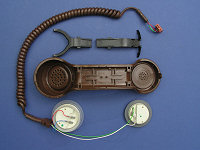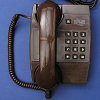
A post-liberalisation design commissioned by BT and a good example of how to keep production costs down without sacrificing quality.
[This article was published in the Telecomms Heritage Journal No 60, Autumn 2007]
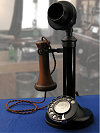
The last of the Post Office's pillar-type telephones. A late design that had a remarkably long service life. Solidly built, but difficult to replace the cords. Updated March 2008 with comments received from THG members.
[This article was published in the Telecomms Heritage Journal No 62, Spring 2008]
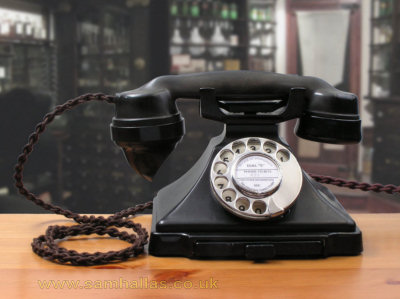
Based on the Siemens Neophone it superseded the candlestick, bringing handsets back into telephony. Revolutionary in appearance with its clean and smooth curves moulded entirely in Bakelite.
[This article was published in the Telecomms Heritage Journal No 68, Autumn 2009]
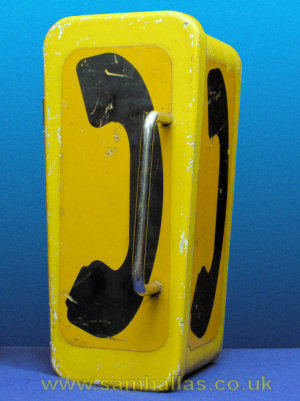
Not strictly part of the Phone-to-bits project, but I did take it to bits. This is a modified version of the BPO Telephone No 745 weatherproof telephone for use with the Plessey Post-Hixon level crossing telephone system.
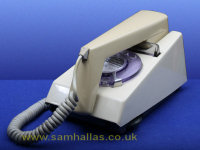
Conceived as a luxury phone for the residential market, the trimphone remains a design classic from the 1960s.

The start of the plastic era for the British Post Office. A step forward in style and a leap in transmission quality from 1959. The most versatile telephone up to that time. [Part 1 of this article was published in the Telecomms Heritage Journal No 70, Spring 2010, Part 2 on the Handset No 3 in Journal No 71, Summer 2010, Part 3 on accessories in Journal No 73, Winter 2010]

A range of one-piece telephones that were the mainstay of the Post Office from the late 30s to the end of the 50s and beyond. The image that comes most often to mind when you say 'old telephone'

The final 'Let's take a telephone to bits' article covers the successor to the 706 and one of the Post Office's last non-electronic designs. It combined design improvements with a reduced cost. It goes on to look at the Telephone No 740 allowing four buttons and the Telephone No 741 wall-mounted version.
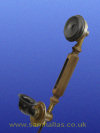
A look at the handset through the ages. Starting with a classic Ericsson style from Dictograph in the 1920s. Following is the first British bakelite handset - Telephone No 164 - then into the plastic era with Handset No 3 & Handset No 16 and finally the innovative design of the trimphone handset.
Telephone No 28 | Telephone No 164
Handset No 3 | Handset No 16 | Trimphone Handset
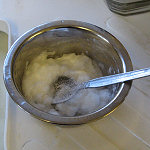
Could this be the magic recipe for restoring telephone cases that have faded badly in daylight? Read on to find out......

